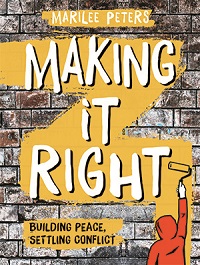| ________________
CM . . .
. Volume XXIII Number . . . .February 17, 2017
excerpt:
Peters makes the case for restorative justice, a system that focuses on repairing the harm done by an offense and rehabilitating the offender. She surveys current responses to wrongdoing from around the world (Papua New Guinea, Singapore, England, Belgium, South Africa, Guatemala, and Uganda) and from the beginning of history (Hammurabi’s Code, Greece’s Draconian system, Solon’s reforms, William the Conqueror’s methods, and the retributive system in use today). Peters describes many different crimes—ranging from vandalism to cyber-bullying to abduction to murder—and uses the results of relevant scientific studies to validate many of her points about the wisdom of restoring equilibrium to both the victim and the offender. The author is honest in reporting cases where this type of justice has not worked, but she remains firm in her conviction that restorative justice is generally a better system than the use of fines, corporal punishment, and incarceration often used today. A final personal example from Peters brings readers back to the here and now and serves to bolster the views expressed earlier. Jef Thompson’s artwork consists mostly of text-heavy, poster-style illustrations done in heavy black line, accented in one or two colors. They do serve to break up the text (sometimes, unfortunately, mid-sentence) but overall the effect is abrasive. Appended with a glossary and extensive list of sources, Making It Right is a title that will be a valuable resource for teaching units and debate preparation. Recommended. Kay Weisman works as a youth services librarian at West Vancouver Memorial Library and chairs the Children’s Literature Roundtables of Canada’s Information Book Award.
To comment
on this title or this review, send mail to cm@umanitoba.ca.
Copyright © the Manitoba Library Association. Reproduction for personal
use is permitted only if this copyright notice is maintained. Any
other reproduction is prohibited without permission.
Next Review | Table of Contents For This Issue - February 17, 2017 |
